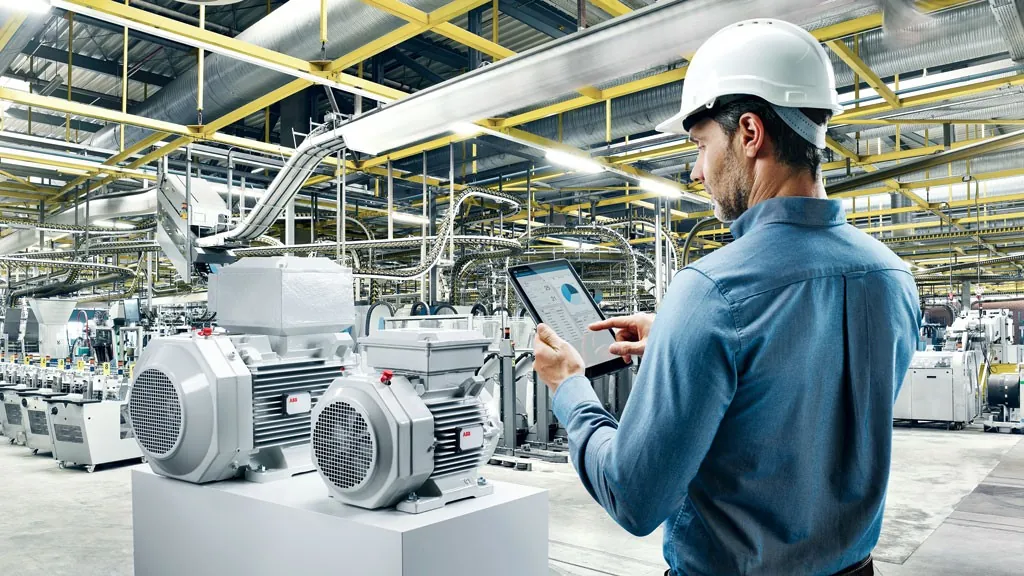How Electrical Component Manufacturers Can Price for Profit
Published On 31 July, 2023
Companies in the electrical componentry industry face numerous challenges that can impact their profitability. One effective strategy these companies can employ to enhance their financial performance is value-based pricing. By focusing on the value their products and services bring to customers and implementing value based pricing, these companies can differentiate themselves in the market and optimise their pricing strategies to drive higher profitability.
One critical approach that can significantly enhance profitability is the concept of value based pricing.
In this article, we will explore the industry challenges faced by electrical componentry companies, delving into sources of value that can be leveraged for value based pricing, analyse real-life case studies, and provide key takeaways for businesses operating in the electrical componentry sector.

Industry Challenges
The electrical componentry industry often faces the following challenges that can impact profitability:
1. Commodity Nature of Products:
Many electrical components are perceived as commodities, leading to price wars and reduced profit margins. Differentiating based solely on product features can be challenging as competitors can quickly replicate them.
2. Complex Supply Chain:
The industry’s intricate supply chain can result in cost fluctuations, making it difficult to maintain consistent pricing.
3. Rapid Technological Advancements:
The fast pace of technological advancements necessitates constant innovation, which can strain R&D budgets and impact pricing decisions.
4. Evolving Customer Demands:
Customer preferences and demands continuously evolve, requiring companies to adapt their product offerings and pricing strategies accordingly.
5. Regulatory Compliance:
The electrical componentry industry operates within a web of stringent regulations and safety standards. Ensuring compliance across different markets and jurisdictions can increase operational complexities and costs.
6. Global Market Volatility:
Fluctuations in global markets, currency exchange rates, and geopolitical factors can impact both sourcing of raw materials and distribution, leading to uncertainties in pricing and supply chain management.
7. Counterfeit and Imitation Products:
The industry is susceptible to counterfeit and imitation products, which erode brand reputation and create confusion for customers, affecting their purchasing decisions and overall market integrity.

8. Environmental Sustainability:
Increasing emphasis on environmental sustainability and regulations related to waste disposal and energy efficiency require companies to invest in eco-friendly practices and technologies, potentially adding to production costs.
9. Labour Shortages and Skills Gap:
The industry faces challenges in attracting and retaining skilled labour, particularly in specialised areas such as advanced manufacturing and engineering. This can lead to delays, increased labour costs, and potential quality issues.
10. Integration and Interoperability:
As electrical systems become more complex and interconnected, ensuring seamless integration and interoperability of various components becomes challenging. Compatibility issues can lead to customer dissatisfaction and increased support costs.
11. Trade Tariffs and Trade Barriers: Trade
disputes, tariffs, and trade barriers between different countries can disrupt supply chains, impact sourcing decisions, and introduce uncertainties in pricing and market access.
Navigating these challenges requires strategic planning, innovation, effective supply chain management, continuous adaptation to market dynamics, and a keen focus on customer needs and preferences. Companies in the electrical componentry industry must remain agile and proactive in addressing these complexities to ensure long-term profitability and sustainable growth.

Sources of Value
To overcome these challenges and increase profitability, electrical componentry companies can adopt value-based pricing strategies by identifying and leveraging sources of value that resonate with their customers. Some critical sources of importance include:
1. Reliability and Performance:
Ensuring electrical components’ reliability and superior performance can increase customer satisfaction and loyalty, justifying higher prices.
2. Customisation and Tailored Solutions:
Offering customised solutions that meet specific customer requirements can command premium pricing, as customers are willing to pay more for tailored products that address their unique needs.
3. Energy Efficiency and Sustainability:
Energy-efficient and sustainable products are highly valued in today’s environmentally conscious world. Highlighting the eco-friendly aspects of electrical components can justify higher prices.
4. Technical Support and Expertise:
Providing exceptional technical support and expertise can differentiate a company from competitors and create value that justifies premium pricing.
5. Reduced Downtime and Maintenance Costs:
Products that minimise downtime and maintenance costs for customers can provide substantial value, allowing companies to charge higher prices based on the cost savings they enable.

Additional Case Studies
Let’s examine real-life case studies of companies in the electrical componentry industry that successfully implemented value-based pricing strategies:
CASE STUDY 1:
Schneider Electric’s Success with Energy-Efficient Solutions
Challenges Faced:
Schneider Electric, a prominent global energy management and automation player, confronted significant challenges as it sought to leverage the escalating demand for energy-efficient solutions. The commercial landscape was rife with technological complexities and heightened environmental awareness, presenting opportunities and obstacles. They needed to navigate these challenges strategically to create a winning formula.
Considerations and Strategic Approach:
In response to the pressing need for sustainable energy solutions, Schneider Electric undertook a comprehensive strategic approach. They meticulously analysed market trends, identifying a burgeoning desire among consumers for energy-efficient products. This presented a twofold challenge: engineering innovative solutions and effectively communicating these offerings’ economic and ecological advantages.
Action Items:
- R&D Innovation: Schneider Electric embarked on a rigorous research and development journey. They channelled resources into designing cutting-edge energy-efficient electrical components and systems. This required a delicate balance between performance optimisation and resource conservation.
- Holistic Value Proposition: Recognising that customers increasingly demanded solutions that offered immediate cost savings and long-term environmental benefits, Schneider Electric designed a value proposition that seamlessly fused these two dimensions. This involved intricate calculations demonstrating the potential reduction in energy consumption and operating costs achievable through their solutions.
- Marketing and Communication: Schneider Electric deployed a multifaceted marketing strategy. They invested in clear and compelling communication campaigns, using data-driven projections to illustrate the potential return on investment for customers who adopted their energy-efficient offerings. This strategy aimed to resonate with both financial decision-makers and environmentally conscious stakeholders.

Outcomes and Achievements:
Schneider Electric’s strategic approach yielded remarkable results that reverberated across multiple fronts:
- Increased Profitability: By addressing the nuanced demands of their target audience and showcasing the tangible financial benefits of energy-efficient solutions, Schneider Electric managed to command premium prices. This elevated pricing strategy, anchored in a robust value proposition, directly contributed to enhanced profitability.
- Expanded Market Share: Schneider Electric’s astute understanding of market trends and customer preferences enabled them to capture a larger market share. Their reputation as an industry leader in energy efficiency bolstered their market presence and credibility, allowing them to outpace competitors.
- Environmental Impact: Beyond financial gains, Schneider Electric’s efforts had a substantial positive environmental impact. By empowering customers to reduce their energy consumption, the company contributed to a collective reduction in carbon emissions and resource depletion.

Schneider Electric’s success in energy-efficient solutions resulted from an adept navigation of challenges, a strategic fusion of innovation and communication, and a commitment to holistic value creation. By aligning their offerings with evolving market dynamics and customer preferences, they solidified their position as a frontrunner in the energy management sector while championing sustainability.
CASE STUDY 2:
ABB’s Customisation Excellence in Electrical Componentry
Challenges:
ABB, a global powerhouse in robotics, power, and automation, confronted multifaceted challenges as they embarked on leveraging their prowess in customisation within the electrical componentry sector. The market demanded innovative and adaptable solutions that could seamlessly integrate with diverse customer needs. Central hurdles were overcoming technological intricacies and addressing the delicate balance between customisation and efficiency.
Considerations and Strategic Approach:
In the face of these challenges, ABB adopted a meticulously crafted strategic approach. Recognising that a one-size-fits-all model no longer sufficed, they delved into a comprehensive analysis of market demands. Balancing the need for tailored solutions with the imperative of efficient production, they created a blueprint to deliver maximum value to their customers.

Action Items:
- In-Depth Customisation Expertise: ABB channelled its considerable expertise in customisation to develop modular electrical components. This involved rigorous research and engineering efforts, enabling them to offer features that could be configured to meet precise customer specifications.
- Reduced Installation Complexity: ABB emphasised delivering custom solutions and streamlining the installation process. They designed modular components that could be easily integrated, reducing installation time and associated costs for their customers.
- Collaborative Partnerships: ABB fostered collaborative partnerships with its customers. This involved in-depth consultations to understand specific needs and challenges. Through open communication and joint problem-solving, they ensured the co-creation of solutions that precisely matched customer requirements.
Outcomes and Achievements:
ABB’s strategic endeavours bore remarkable outcomes that resonated across various dimensions:
- Enhanced Profitability: By offering tailor-made solutions that directly address customer pain points, ABB positioned itself to charge premium prices. This enhanced their profitability and justified the added value they provided through customisation.
- Strong Customer Relationships: ABB’s commitment to customisation forged robust customer bonds. Through close collaboration and a demonstrated understanding of unique needs, ABB became a trusted partner in the eyes of its clientele, fostering long-term relationships.
- Market Leadership: ABB’s ability to deliver precisely what customers require positioned them as an industry leader. Their modular solutions reduced installation time and costs and set a benchmark for innovation and adaptability in the electrical componentry sector.
Astute strategic considerations and adept action marked ABB’s triumphant journey in electrical componentry customisation. By meticulously catering to the evolving demands of the market, they not only propelled their profitability but also etched a distinctive reputation as a trusted partner capable of seamlessly translating customer needs into reality.
Key Takeaways for Electrical Componentry Companies
1. Focus on Unique Value Proposition:
Identify sources of value that set your products apart from competitors and resonate with customers’ needs and preferences.
2. Communicate Value Effectively:
Develop clear and compelling messaging highlighting the value your products bring, whether it’s energy efficiency, customisation, sustainability, or reduced maintenance costs.
3. Segment Your Market:
Understand your customer segments and tailor your pricing strategies to each segment’s value perceptions and willingness to pay.
4. Invest in Innovation:
Continuously innovate to stay ahead of technological advancements and customer demands, enabling you to offer cutting-edge solutions that command premium pricing.
5. Offer Exceptional Support:
Provide exceptional technical support and expertise to build trust and long-term customer relationships, justifying higher prices.
The electrical componentry industry faces various challenges that can impact profitability, including price wars and technological advancements. Value-based pricing offers a compelling solution, enabling companies to differentiate themselves and optimise their pricing strategies based on the unique value they provide to customers. Real-life case studies of industry leaders Schneider Electric and ABB demonstrate the effectiveness of this approach in enhancing profitability and market share.

To equip professionals in the electrical componentry industry with the skills and knowledge needed to implement value-based pricing successfully, we encourage you to consider enrolling in Pricing University programs. These programs provide comprehensive training and insights into pricing strategies, value identification, and effective communication of value propositions. Honing your pricing expertise can contribute to your company’s profitability and success in a highly competitive market.
Implementing value-based pricing strategies is a powerful tool that companies in the electrical componentry industry can leverage to increase profitability and thrive in a challenging environment. By identifying and communicating unique sources of value, businesses can differentiate themselves, command premium prices, and build lasting customer relationships. Through continuous innovation, strategic pricing, and a commitment to delivering exceptional v



